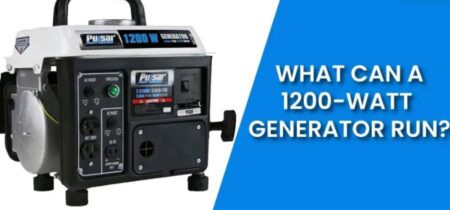
Generators are a vital part of modern life because they offer power under conditions where access to electricity is restricted or unavailable entirely. A generator is a machine that uses electromagnetic induction, a phenomenon of generating electric current in a conductor to transform mechanical energy into electrical energy. In this technique, a conductor moves through a magnetic field to produce an electrical current.
It’s impossible to overestimate the value of generators since they keep homes, businesses, and whole towns powered during blackouts or loadshedding brought on by storms, natural catastrophes, or other unforeseen circumstances. They are also used in remote areas with limited access to the power grid, including as building sites or off-grid residences.
History and Evolution of Generators
The invention of generators dates back to the early 1800s, when Michael Faraday made the initial discovery of the electromagnetic induction principle. The first generator, created by Hippolyte Pixii in 1832, was made possible by Faraday’s discoveries. A hand-cranked magnet and copper wire were employed in this early generator to generate a modest amount of electricity.
Generators have improved over time becoming more reliable, adaptable, and efficient. There are broad ranges of generators on the market today, each one created for a particular use or application. Others are made for use in industrial settings or to provide backup power for hospitals, data centers, and other important facilities. Some generators are portable and can be used for backup power while camping or at home.
In the development of renewable energy sources like wind and solar electricity, generators have also been essential. These energy sources frequently produce energy only when the wind is blowing or the sun is shining because they are intermittent. Renewable energy can be made more dependable and practical by using generators to store this energy and provide power when it is required.
How Does a Generator Work?
To understand how a generator works, let’s first understand the concept of electromagnetic induction. Electromagnetic induction is a process by which a moving magnetic field induces an electrical current in a conductor. In a generator, this is achieved by rotating a coil of wire inside a magnetic field, which causes an electrical current to flow through the wire.
A generator typically consists of a rotor, stator, and exciter among other parts. The stator is a stationary component with a string of magnets whereas the rotor is a revolving component with a coil of wire inside. The rotor can begin revolving by receiving a starting electrical current from the exciter.
The rotation of the rotor in a generator, which produces a shifting magnetic field, is the first step in the process of producing electricity. Electrical current is produced as a result of the magnetic field passing across the stator’s stationary wire coils when the rotor rotates. To supply power to any systems or devices attached to the generator, this current is then routed through a number of cables and other parts.
Generators are available in an extensive range of designs, each suited for certain uses and objectives. The majority of portable generators are compact and made for usage outdoors or as a source of emergency power for homes and businesses. On the other hand, standby generators are bigger and intended to offer backup power to crucial buildings like hospitals or data centers. Another popular alternative is an inverter generator, which offers a dependable and effective power supply for outdoor activities like camping and tailgating.
Industrial generators are used to power manufacturing facilities, mines, and other heavy-duty applications. They are substantially larger. Last but not least, solar generators turn sunshine into electrical energy using photovoltaic cells, giving households and businesses a renewable and sustainable source of power.
Types of Generators
There are several kinds of generators, each created to meet a certain requirement and application. Compact and made for outdoor use, such as camping or tailgating, portable generators can also be utilised as a backup power source for homes and small businesses. These generators can range in size from modest 1,000 watt versions to huge 10,000 watt models and are commonly fuelled by gasoline or propane.
- Standby generators: They are made for more demanding applications and are frequently used as backup power for crucial infrastructure like hospitals and data centers. Large generators can supply electricity for longer periods of time than portable generators since they are bigger and more powerful. They can be programmed to automatically turn on in the case of a power outage and are frequently powered by natural gas or propane.
- Inverter generators: They are a more recent variety of generator that generates clean, effective power using cutting-edge technology. They are made to be small, light, and silent, which makes them perfect for outdoor activities like camping and tailgating. The clean, consistent electricity that inverter generators create makes them ideal for use with delicate gadgets like laptops, smartphones, and cameras.
- Industrial generators: Industrial generators are significantly larger and are used to power manufacturing facilities, mines, and other heavy-duty applications. Although they can be greatly helpful in providing power during blackouts or in isolated areas, generators should always be used safely. Never using a generator indoors is one of the most crucial things to keep in mind because they generate carbon monoxide.
Safety Precautions of a Generator
Although they can be incredibly helpful in providing power during blackouts or in isolated areas, generators should always be used safely.
- Never using a generator indoors is one of the most crucial things to keep in mind since they release carbon monoxide, which can be fatal. Always operate generators outdoors, away from windows, doors, and other openings to the house, in a well-ventilated location.
- When operating a generator, you should adhere to the manufacturer’s guidelines and never overload it with too many appliances or equipment. A generator that is overloaded may malfunction or overheat, which can be hazardous. The generator should also be kept dry and out of the elements because exposure to rain or snow might harm it or make it dangerous.
- It’s important to ensure that a generator is correctly grounded when using it as a safety precaution. If necessary, a competent electrician should perform this as it helps to protect against electrical shocks or fires. Last but not least, it’s crucial to keep kids and animals away from generators because they can be curious and may unintentionally touch or harm the appliance.
You can make sure that generators offer a reliable and secure source of power for your house or outdoor activities by following these safety guidelines when using them. When using any kind of gear or equipment, it’s crucial to always put safety first and to avoid taking needless risks that could lead to harm or injury.
Final Words
In times when the conventional power system is unavailable or disrupted, generators have become an integral machine of our life. From portable generators for outdoor use to industrial generators for heavy-duty purposes, they’re available to match different requirements, each tailored to meet certain needs and applications.
However, it’s important for you to remember that generators can be dangerous if not used properly. Following the manufacturer’s instructions, properly grounding the generator, and using it in a well-ventilated area are some of the most important safety precautions to take when using a generator. By taking these precautions, we can ensure that generators provide us with reliable and safe power when we need it most.
Generators have come a long way since their invention, and will continue to evolve with advancements in technology. As our reliance on electricity continues to grow, generators will remain an important backup power source and will continue to play a vital role in our lives.
Also Read:
WHY ARE HONDA GENERATORS SO EXPENSIVE








